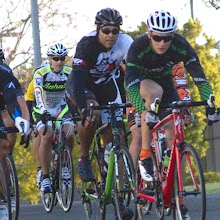So, it's been a while since I've posted anything. Life has had me in its jet wash for a minute and I've been stressed out about it all. For those that know me well, you know how I deal with stress in life...delve into something and try to improve myself. This little character trait has served me well over the years. I completed my master's degree and entered into the competitive ranks of three strength sports (powerlifting, Strongman, and Olympic-style weightlifting) pretty much all because I had stress in my life and didn't know how to deal with it. Improving myself is my alcohol...lol.
So, my new venture is training the shot put. I have no background, whatsoever, in track or field events, but through training the Olympic lifts (the snatch and clean & jerk), I've become interested in focusing my power on something outside of weightlifting. I've been a fan of throwing sports since I was a kid. I recall seeing an 8 lb shot sitting in the gym at my junior high (I was in 7th grade) and thinking how cool it would be to try to throw (put) it. Being the shy, nerdy, overweight pre-teen that I was then, I shied away from the thought and busied my mind on other, more academic, pursuits. Over the years, I've never lost that fascination. I'm an avid track & field fan and during the summer olympics, when most people are drooling over who's the fastest man/woman, I'm always curious who's putting the shot or throwing the javelin or discus the farthest.
Anyways, I found a throwing coach in the area and had my first lesson today. This was hard but exhilarating. The 16 lb shot didn't feel heavy to me (guess all my strength training has paid off...lol) but putting it efficiently is a beast. Today we mainly worked on the basics...the power position, turning my foot & hips appropriately, and following through. My main take-away from today's session...it's not strength, it's technique. Check out the vid of one of my throws.



